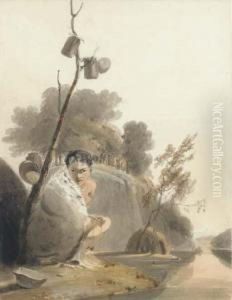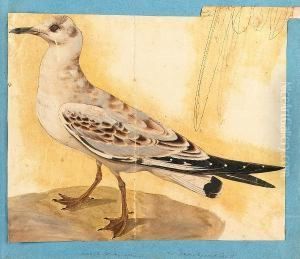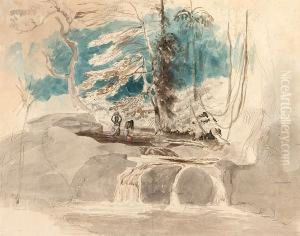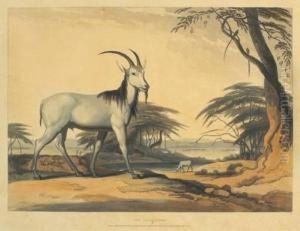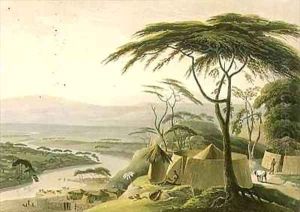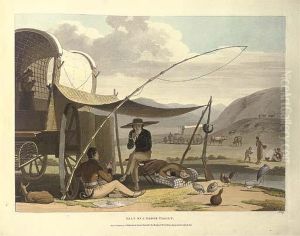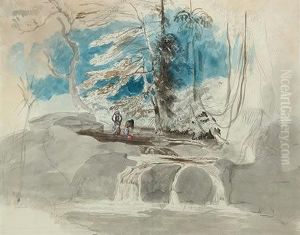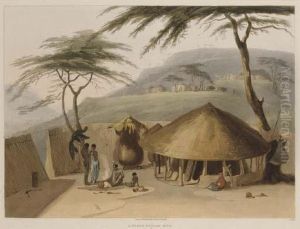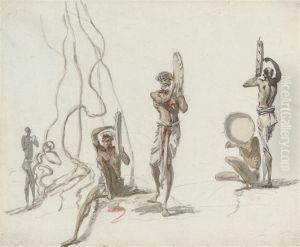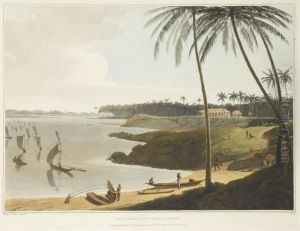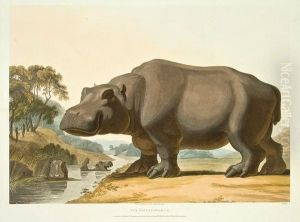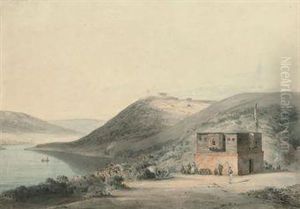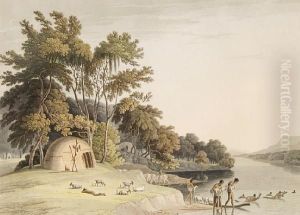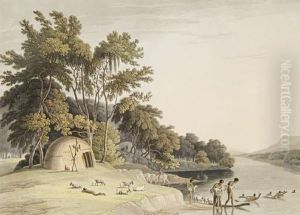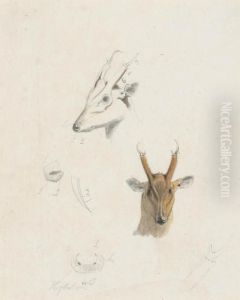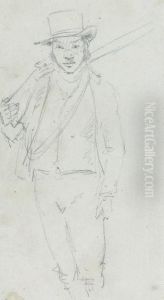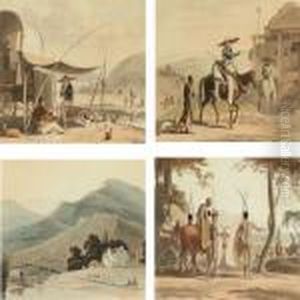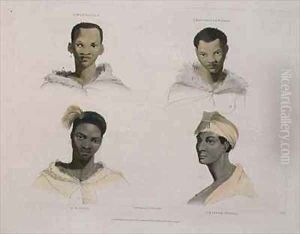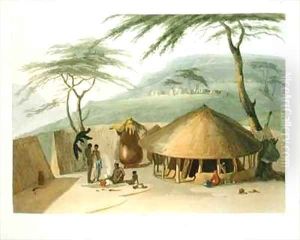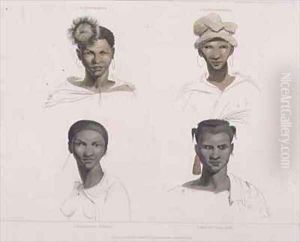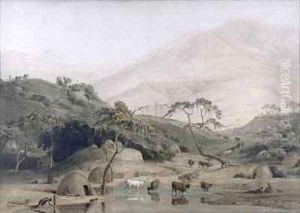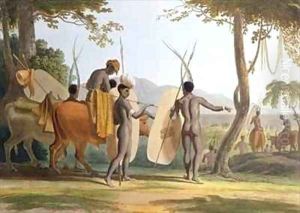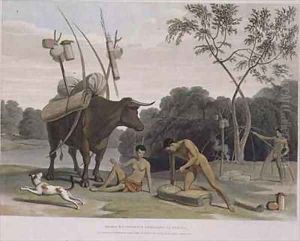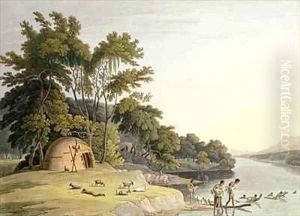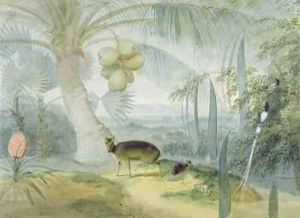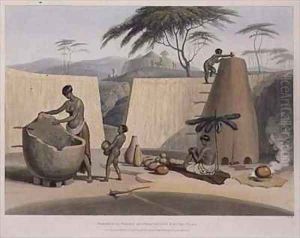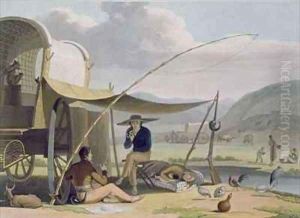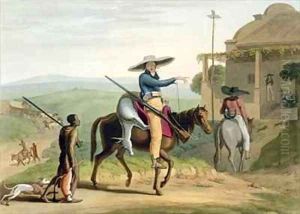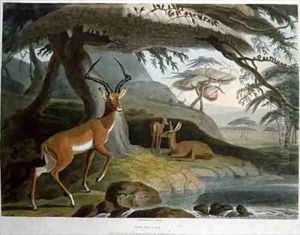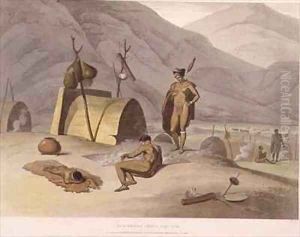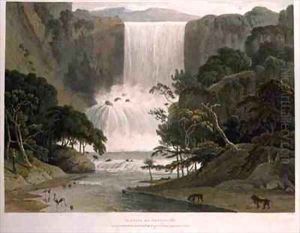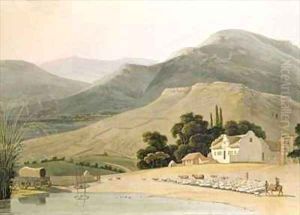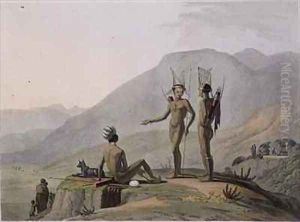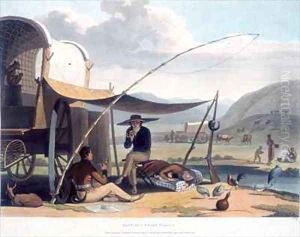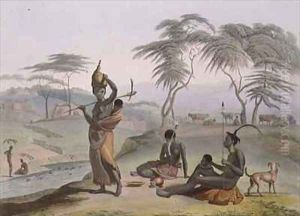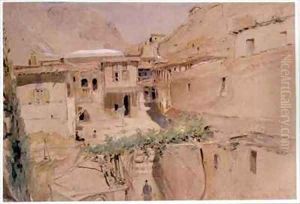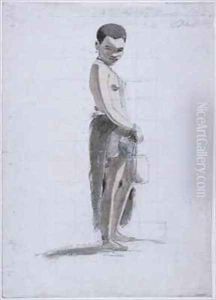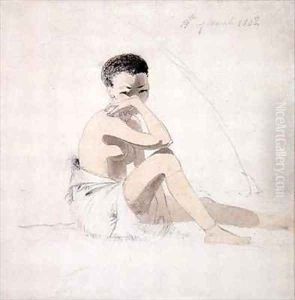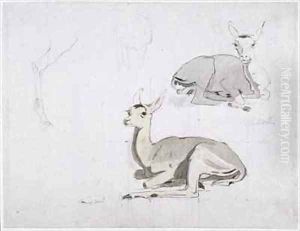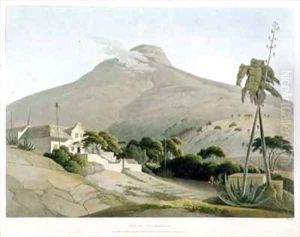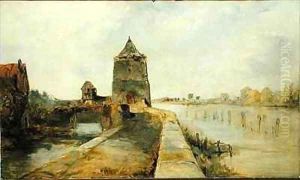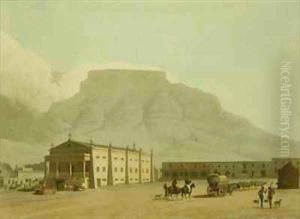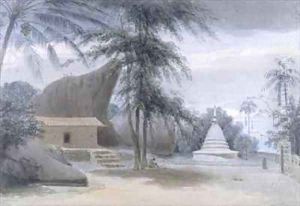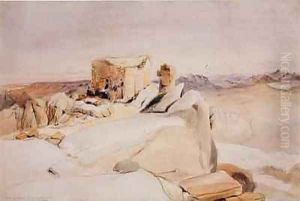Samuel Daniell Paintings
Samuel Daniell was an English painter known for his striking depictions of African landscapes and wildlife during the early 19th century. Born in 1775 in Chertsey, England, he was the younger brother of the painter Thomas Daniell and the nephew of the landscape painter William Daniell, with whom he shares a strong family association with art.
Samuel Daniell began his artistic career under the guidance of his relatives, who were also his mentors. He developed a keen interest in exotic landscapes and fauna, which became the hallmark of his work. In 1799, he accompanied his uncle to the Cape Colony in South Africa, where he held the position of secretary to the governor, Sir George Yonge. During his time in South Africa, Daniell undertook several expeditions into the interior, which provided him with the opportunity to observe and document the region's unique natural environment.
He was particularly fascinated by the wildlife and often went on to create watercolors and sketches of the animals he encountered, including elephants, rhinoceroses, and lions. These images were notable for their accuracy and detail, and they contributed significantly to European knowledge of African fauna at the time. Daniell's experiences in Africa culminated in a series of aquatints titled 'African Scenery and Animals,' which were published between 1804 and 1805. These works were well-received for their vivid portrayal of the African wilderness and its inhabitants.
Tragically, Daniell's career was cut short by his untimely death in 1811, at the age of 36, due to illness. Despite his brief life, Samuel Daniell left a lasting legacy through his artwork, which continues to be appreciated for its contribution to natural history illustration and its influence on European perceptions of Africa in the early 19th century.
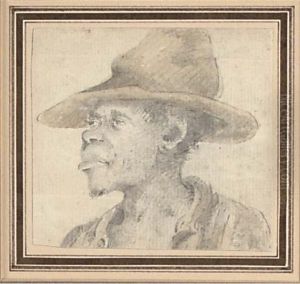
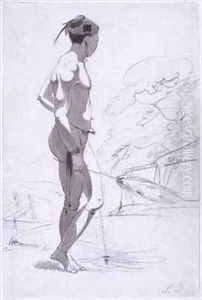
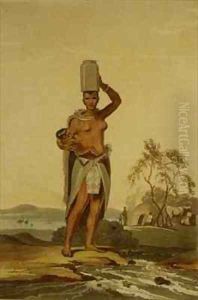
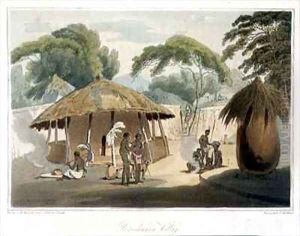
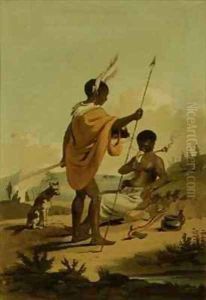
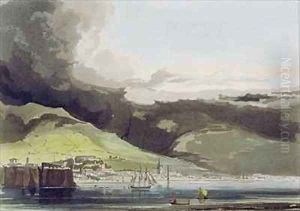
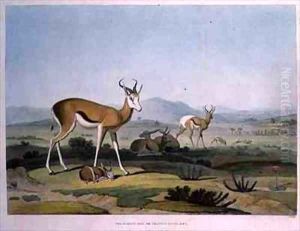
![A Picturesque Illustration Of
The Scenery, Animals, And Nativeinhabitants, Of The Island Of Ceylon.
London: By T. Bensley,[1807]-1808 [watermarks: 'j, Whatman 1801'].](https://www.niceartgallery.com/imgs/1256842/s/samuel-daniell-a-picturesque-illustration-of-the-scenery-animals-and-nativeinhabitants-of-the-island-of-ceylon-london-by-t-bensley18071808-watermarks-j-whatman-1801-9077eb42.jpg)
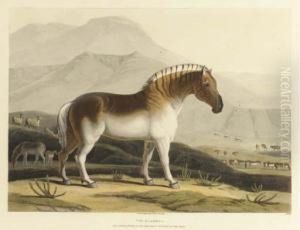
![A Picturesque Illustration Of
The Scenery, Animals, And Nativeinhabitants, Of The Island Of Ceylon.
London: By T. Bensley,[1807]-1808 [watermarks: 'j, Whatman 1801'].](https://www.niceartgallery.com/imgs/1256840/s/samuel-daniell-a-picturesque-illustration-of-the-scenery-animals-and-nativeinhabitants-of-the-island-of-ceylon-london-by-t-bensley18071808-watermarks-j-whatman-1801-e4c3edb3.jpg)
